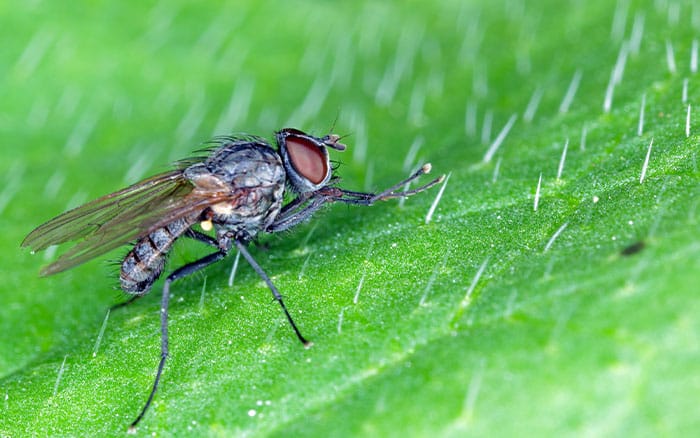This pest feeds on the roots of brassicas in your garden. Find out how to identify and treat Cabbage Root Fly.
Cabbage root fly maggots feed on the roots of vegetable brassicas. Examples include cabbage, cauliflower, Brussels sprout, swede, turnip, radish and Asian greens.
What is Cabbage Root Fly
Adult cabbage root flies look like a smaller grey-coloured version of the common house fly.
Maggots from the hatched eggs laid by the female are white, legless and headless. And they feed on the roots of the plants before tunnelling up into the main stem.
The maggots doing this can kill the seedlings it invades.
How to spot Cabbage Root Fly
The main symptom early in the season is wilting of young plants as the small, white maggots eat into the main root of the plant.
The adult lays eggs on the soil surface close to the plants from late spring and successively throughout the summer.


How to control Cabbage Root Fly
Regularly check plants from late spring and throughout the summer, removing any eggs found.
Brassica collars, (available from Garden Centres and Plant Nurseries), can be placed around the base of the stems of recently planted seedlings. Or you can make your own circle or square shapes, approximately 8-15cm across, using cardboard. Cabbage fly eggs deposited on the collars often dry up and fail to hatch.
Cover seedlings and young plants with insect-proof horticultural fleece or fine-mesh and keep in place until the plants are ready to harvest. Encouraging natural predators such as hedgehogs, birds and ground beetles, is also a great control method.
Biological controls in the form of nematodes are available to buy but these nematodes can also kill other species that are not damaging the plants.



Need advice?
If you need specialist advice, I would always recommend you speak to your local garden centre, plant nursery or contact the advisory service of the Royal Horticultural Society. Each of these organisations has expert knowledge that can make pest and disease control so much easier. And when speaking to a garden centre or nursery that is local to you, the chances are they will know whether there has been an influx in pests too.

Leave A Comment